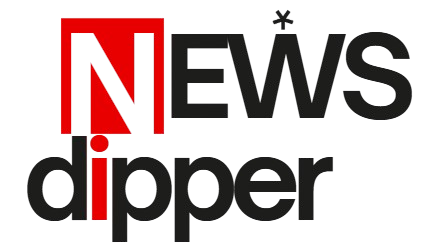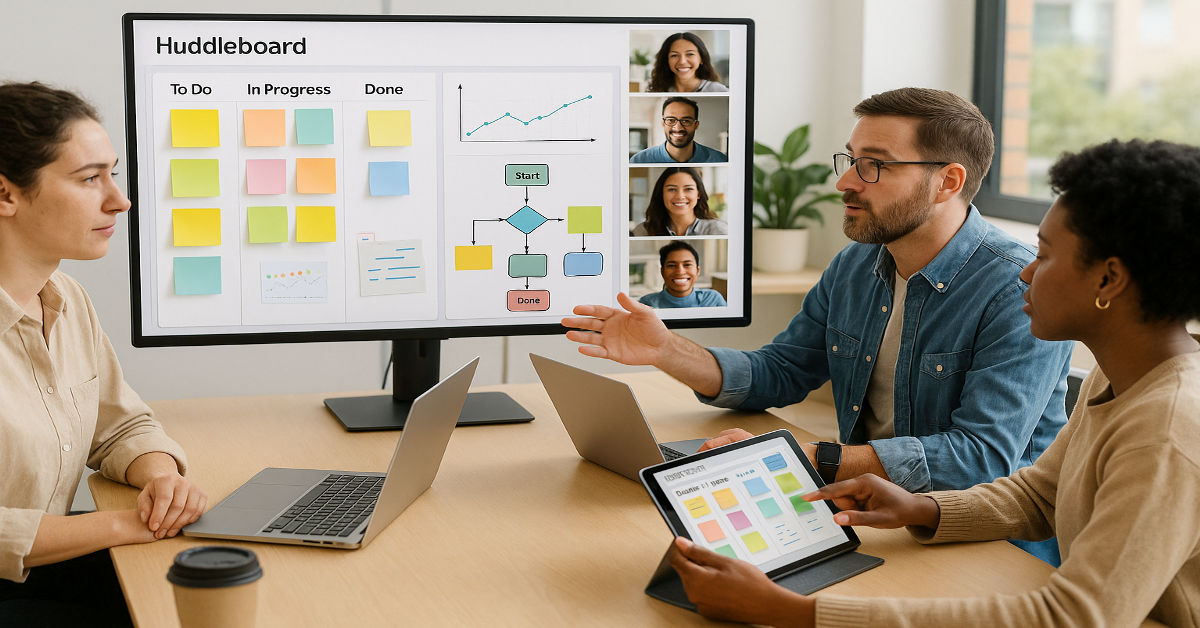In fast-paced work environments, communication gaps and misaligned goals can quickly lead to delays, inefficiencies and frustration. As organizations embrace lean thinking and agile methodologies, the need for tools that foster real-time collaboration becomes vital. One such tool, the huddleboard, offers a visual and intuitive way to streamline teamwork, track progress, and boost accountability.
Whether you’re leading a project team or managing a department, this article will guide you through everything you need to know about huddleboards — from what they are to how they can transform the way your team works.
What Is a Huddleboard?
A huddleboard is a visual management board designed to facilitate communication, alignment, and collaboration among team members. Typically used during daily or weekly team huddles, it organizes tasks and updates into a visual layout, often divided into columns representing different stages of a workflow such as “To Do”, “In Progress”, and “Done”.
Task cards are moved through these columns to reflect progress, making it easier for everyone to see what’s being worked on, what’s blocked, and what’s completed. Huddleboards can be physical whiteboards or digital platforms, depending on the team’s needs.
The Evolution of Visual Management Tools
Visual task management has long been a staple in operational efficiency. From the traditional Kanban boards used in Japanese manufacturing to modern project dashboards in software development, the shift toward visualizing work has consistently driven better results.
Huddleboards represent the evolution of this idea, tailored to short, focused team meetings and continuous improvement cycles. Unlike conventional project management tools, huddleboards are made to be simple, quick to update, and accessible to all team members, not just project managers.
Key Features of a Huddleboard
While huddleboards vary by team and tool, the core structure typically includes the following elements:
- Columns for Workflow Stages: Usually labeled as “Backlog”, “To Do”, “In Progress”, and “Completed”.
- Task Cards: Represent individual work items, often color-coded or labeled for clarity.
- Team Assignments: Indicate who is responsible for each task.
- Deadlines or Timeframes: Highlight expected completion dates.
- Blockers and Flags: Identify issues that need attention or escalation.
These features help turn abstract plans into clear, visible actions that anyone on the team can follow.
How Huddleboards Improve Communication
Effective teams rely on clarity, and huddleboards deliver that by creating a shared reference point. Here’s how they enhance team communication:
- Transparency: Everyone can see who is doing what at a glance.
- Accountability: Assignments and progress are visible, encouraging ownership.
- Quick Updates: Teams can use the board for daily standups or weekly reviews.
- Immediate Problem Solving: Blocked tasks are flagged quickly and discussed in real time.
- Visual Engagement: Visual layouts are easier to digest than spreadsheets or long documents.
For distributed teams, digital versions provide the same level of clarity through apps and shared screens.
Benefits of Using Huddleboards in Modern Workplaces
The use of a huddleboard is more than a productivity hack — it represents a culture shift toward transparency and agility.
Major Benefits:
- Increased Team Engagement
When work is visualized, team members become more invested in outcomes. - Better Alignment with Goals
Everyone sees how their tasks contribute to larger objectives. - Faster Decision Making
With updated task statuses, teams can respond faster to changes. - Reduced Meeting Times
Quick visual reviews replace long status meetings. - Improved Workflow Efficiency
Bottlenecks are easier to spot and resolve.
Digital vs Physical Huddleboards
While the core function remains the same, the choice between digital and physical huddleboards depends on the team’s setup and preferences.
| Feature | Physical Huddleboard | Digital Huddleboard |
| Setup | Whiteboard, sticky notes | Online tools (e.g., Trello, Jira) |
| Accessibility | On-site only | Remote access anytime |
| Updates | Manual | Real-time updates |
| Integration | Limited | Connects with tools (Slack, Google Drive) |
| Cost | Low initial cost | Varies by software plan |
| Best for | In-office teams | Hybrid or remote teams |
Digital huddleboards have gained popularity due to the rise of remote and hybrid workplaces, allowing real-time collaboration without being in the same room.
Best Practices for Implementing a Huddleboard
To maximize the impact of a huddleboard, consider these implementation tips:
- Start Simple
Begin with a basic layout — add complexity only when necessary. - Assign a Facilitator
One person should keep the board updated and ensure team participation. - Use Visual Cues
Color-code tasks or add tags to differentiate between priorities. - Review Regularly
Make the board part of your team’s daily or weekly rhythm. - Encourage Feedback
Let the team shape how the board evolves based on usability. - Keep It Updated
An outdated board loses its effectiveness and trustworthiness.
Common Use Cases Across Industries
Huddleboards are flexible and can be tailored to various professional environments.
| Industry | Use Case Examples |
| Healthcare | Patient flow tracking, shift assignments |
| Manufacturing | Production line updates, quality control issues |
| Software Development | Agile sprint tracking, bug resolution workflows |
| Marketing | Campaign progress, content planning |
| Education | Lesson planning, student project monitoring |
| Customer Service | Ticket resolution timelines, escalation tracking |
In each case, the visual and collaborative nature of a huddleboard keeps teams aligned and informed.
Huddleboard vs Other Collaboration Tools
| Tool Type | Focus Area | Huddleboard Unique Value |
| Project Management | Long-term projects | Short-term, daily or weekly visibility |
| Task Management | Individual tasks | Team-based visual collaboration |
| Communication Tools | Messaging and updates | Visual workflow and team alignment |
| Calendar Tools | Scheduling | Workflow progression, not just timelines |
Unlike specialized tools that serve one function, huddleboards offer a blend of communication, collaboration, and task management — all in one visual format.
Table: Huddleboard Comparison Overview
| Feature/Aspect | Huddleboard | Kanban Board | Gantt Chart | To-Do List |
| Visual Layout | Yes | Yes | Yes | Limited |
| Workflow Focus | Yes | Yes | Project timeline | Task-only |
| Team Collaboration | High | Medium | Medium | Low |
| Real-Time Tracking | Yes | Yes | No | Yes |
| Complexity | Low to Medium | Medium | High | Low |
| Best Used For | Agile teams, standups | Agile workflows | Long projects | Personal productivity |
How to Create Your First Huddleboard
Here’s a basic guide to get started:
- Choose the Format: Decide between physical or digital.
- Define the Workflow: Identify stages like “To Do”, “Doing”, and “Done”.
- Add Tasks: Write tasks on cards or digital notes.
- Assign Team Members: Make sure each task has an owner.
- Set Update Schedule: Decide how often the board will be reviewed.
- Collect Feedback: Adjust layout and process based on team feedback.
Tools like Trello, Miro, and Jira can help you set up digital versions with ease.
Conclusion
In today’s dynamic work environments, clarity, agility and collaboration are non-negotiable. A huddleboard brings these values to life by creating a shared visual space where tasks are tracked, progress is celebrated, and teams stay aligned.
Whether you’re managing a small project or a large team, the simplicity and power of a huddleboard can elevate your workflow, reduce inefficiencies, and foster a culture of ownership and accountability. It’s not just about getting things done — it’s about doing them together, better.
Frequently Asked Questions (FAQ)
What is the main purpose of a huddleboard?
To visually manage team tasks and enhance communication through a shared workflow view.
Can huddleboards be used remotely?
Yes. Digital huddleboards are designed for remote and hybrid teams.
How is a huddleboard different from a Kanban board?
While both visualize work stages, huddleboards are typically used for daily or short-term team updates and discussions.
Is a huddleboard only for tech teams?
Not at all. They are widely used in healthcare, education, manufacturing, and more.
What tools are best for creating a digital huddleboard?
Trello, Jira, Microsoft Planner, and Miro are popular options.

